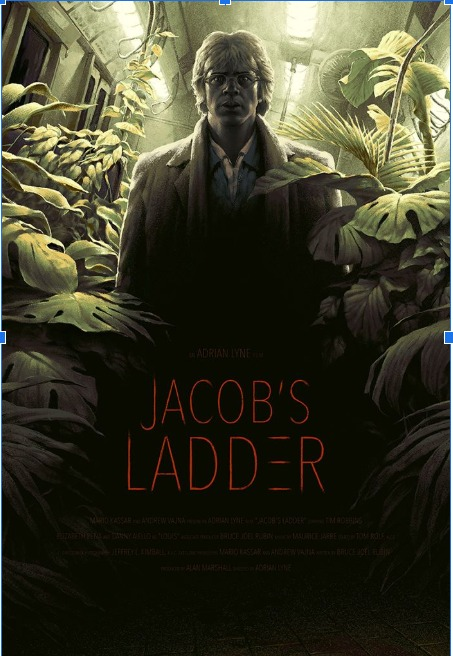Hello Dear Film Enthusiasts
Today, I would like to talk about the 1990 American film entitled Jacob’s Ladder. The film is directed by Adrian Lyne. Film, upon its release, was not very successful, but gradually it received a cult status, moreover, the special effects and non-linear story-telling became really popular and influential.
The film can be identified as a physiological horror, though it is directly associated with the background of war. It is 133 minutes long. It tells a story of Jacob Singer, an American infantryman whose experiences during his military service in Vietnam result in strange, fragmentary visions and bizarre hallucinations that continue to haunt him. As his ordeal worsens, Jacob desperately attempts to learn the truth. The film is portrayed in first person narrative, as we see and experience everything through the character of Jacob. We, as an audience, know exactly what Jacob knows and eventually through his ordeal we understand and experience his trauma, and like him, we also would like to learn about its origins.
The psychological horror genre normally differs from traditional horror in the sense that it is built through atmosphere, eerie sounds, and the exploitation of viewer’s and character’s psychological fears. This kind of horror is designed to evoke discomfort and fear by tapping into universal psychological and emotional vulnerabilities. It plays with the traits like suspicion, self-doubt, paranoia, and distrust of others, the world, and oneself. In this film too, we can observe similar conditions of Jacob.
Adrian Lyne is an English director known for his oeuvre in various forms of thrillers. The present film, primarily because of its visual treatment, turns out to be a psychological horror. The on-screen horror that we witness through the character of Jacob is directly associated with his experiences of the war. Thus, the visual horror was a need of the plot for the audience to understand the intensity of the trauma that Jacob undergoes. The music supports the visual quite efficiently and creates a gothic feel for the audience. Except for the opening scene, the war sequences are invariably part of Jacob’s dreams and hallucinations. Jacob’s disturbed past life, failed marriage, death of his child, all these painful moments are presented to the audience in visual fashion. Something that enhances the intensity of narrative and experience of the audience. Use of Montage and fast-paced editing for hallucinations and dreams adds pop-like imagery for the audience which we later come to know the effect of the experiment that the soldiers passed through, including Jacob.
The title of the film has direct Biblical reference in which Jacob finds a ladder which leads him to heaven. Here, in the movie Jacob’s Ladder, refers to the protagonist and the specific type of drug experiment he and his troop members went through. In the climax, the audience gets to know that a specific type of drug was developed to make the soldiers more violent, which was called ladder. Unfortunately, the drug worked completely fine, but instead of using violence against the so-called “enemy”, the troop, in fact, used it on each other. Like Biblical Jacob, the protagonist also feels obligation and inheritance for the people. While “ladder” is equated to drugs in the movie, in a way, it makes a statement like Marx that religion is a drug for the masses.
The last scene of the movie is still perplexing; Jacob returns home where his deceased son Gabe holds his hand and they together climb the stairs leading to bright light. And the very next sequence is, we see Jacob in an Army tent under treatment, where he is declared dead. This last scene basically puts the entire movie into the pre-death visuals of Jacob, and in the end he dies. Considering this interpretation, the entire film did not really happen in the cinematic universe, and Jacob never returned to his family. All we have seen is just his dreams when he was wounded, under treatment, fighting against the death, in which, ultimately, death wins.
The film is an excellent example of experiment, psychological horror, and at the same time, commentary on the horrors of war. The film showcases to what extent the authorities can go to achieve their goal and to hide their illegal-immoral acts. Jacob’s horror was not just a self-doubt, but a real danger that he was facing from his own protectors - the governing authorities. Thus, the film indirectly takes its stand against the war and government atrocities.
That's all for today. Do comment your feedback.


Comments
Post a Comment